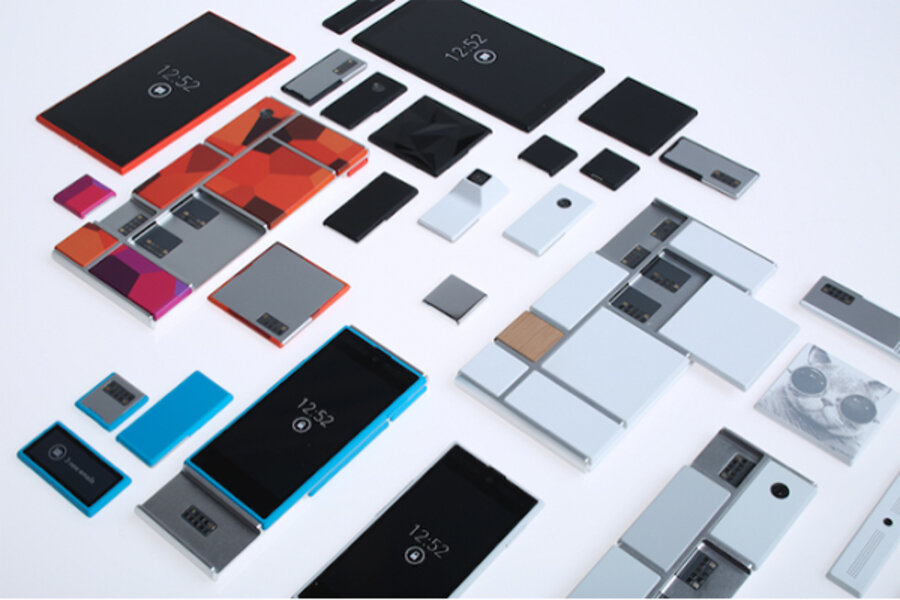Motorola Project Ara: Snap together a custom cellphone
Loading...
The difference between Apple and Android smart phones has always been more philosophical than technical. Apple aims to create phones that satisfy everyone. Samsung, HTC, and the other Android manufacturers have a different approach. No one phone fits all, so you make everyone happy by offering options.
Motorola has taken this idea to its extreme. The subsidiary of Google (the company behind Android) announced a project that would let customers select every aspect of their phone – from the screen and camera to the processor and battery – and then slide the pieces together themselves.
Project Ara will "give you the power to decide what your phone does, how it looks, where and what it's made of, how much it costs, and how long you'll keep it," says Motorola project leader Paul Eremenko in announcing the program.
Ara phones would be completely modular. Each component could snap into a uniform frame. If you're a photo buff, you might opt for the camera module with a high-end lens. If you need more battery life than you expected, pop out the old battery and insert a new one that offers more juice. Or, if Samsung designs a higher-resolution screen next year, you could swap out a competitor's display without needing to throw away the entire device.
Motorola's plan tackles several of the problems that have loomed over gadgetmakers. It addresses the alleged wastefulness of today's two-year phone cycle. Its flexibility in features and cost could appeal to the developing world, where the price of smart phones can be prohibitive. And since Ara would be open to any developer, independent companies could design one amazing component without needing to engineer every other aspect of a phone. This could bring the innovation of an app store to hardware.
However, Project Ara ignores why current smart phones are the way they are. Apple crams a lot of power into its devices by crafting components that tuck together perfectly. Any modular phone with similar specs would inherently be bulkier. Americans have largely abandoned home-built computers, opting instead for the convenience of pre-made systems. Plus, as technology improves and components get smaller, today's modular dimensions may not make sense by the time you're ready to upgrade.
Project Ara is still a prototype. Motorola plans to send out developer kits this winter. But Google has a great track record. While Apple and Android go toe-to-toe in the United States, Android makes up 79 percent of new smart phones worldwide, according to research firm IDC. The future may lie in flexibility.
For more on how technology intersects daily life, follow Chris on Twitter @venturenaut.
The original version of this article ran in the November 25 issue of the Christian Science Monitor magazine.





